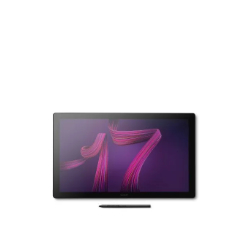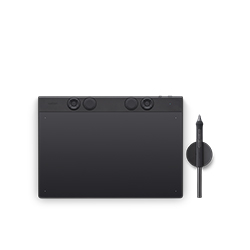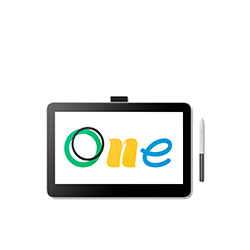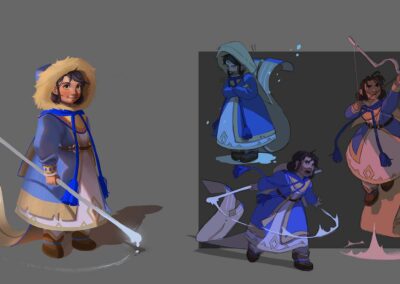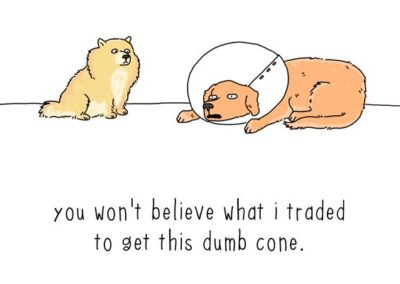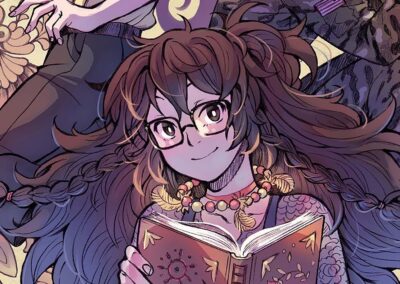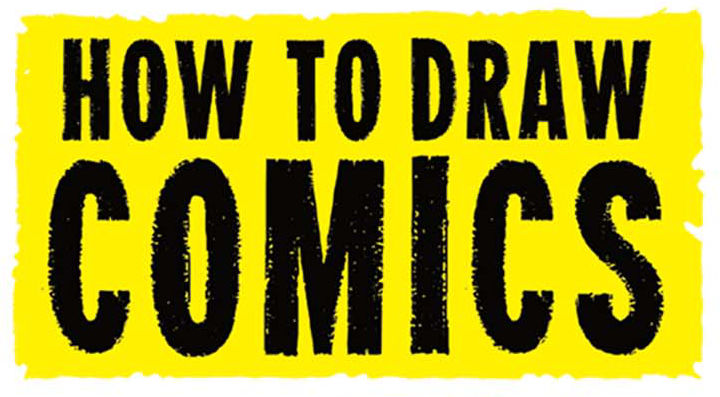
How to draw comics
Etherington Bros’ Comics Crash Course
The Etherington Bros are well-known as one of the greatest teams of drawing teachers around — their How to Think When You Draw series of books, and their blog, have helped millions of artists learn how to draw essentially everything.
In addition to the free drawing tutorials on their blog, they’ve released a free ebook just for young, beginning artists — How to Think When You Draw Junior. You can download the entire ebook here for free, or read on to get a sample of the tutorials
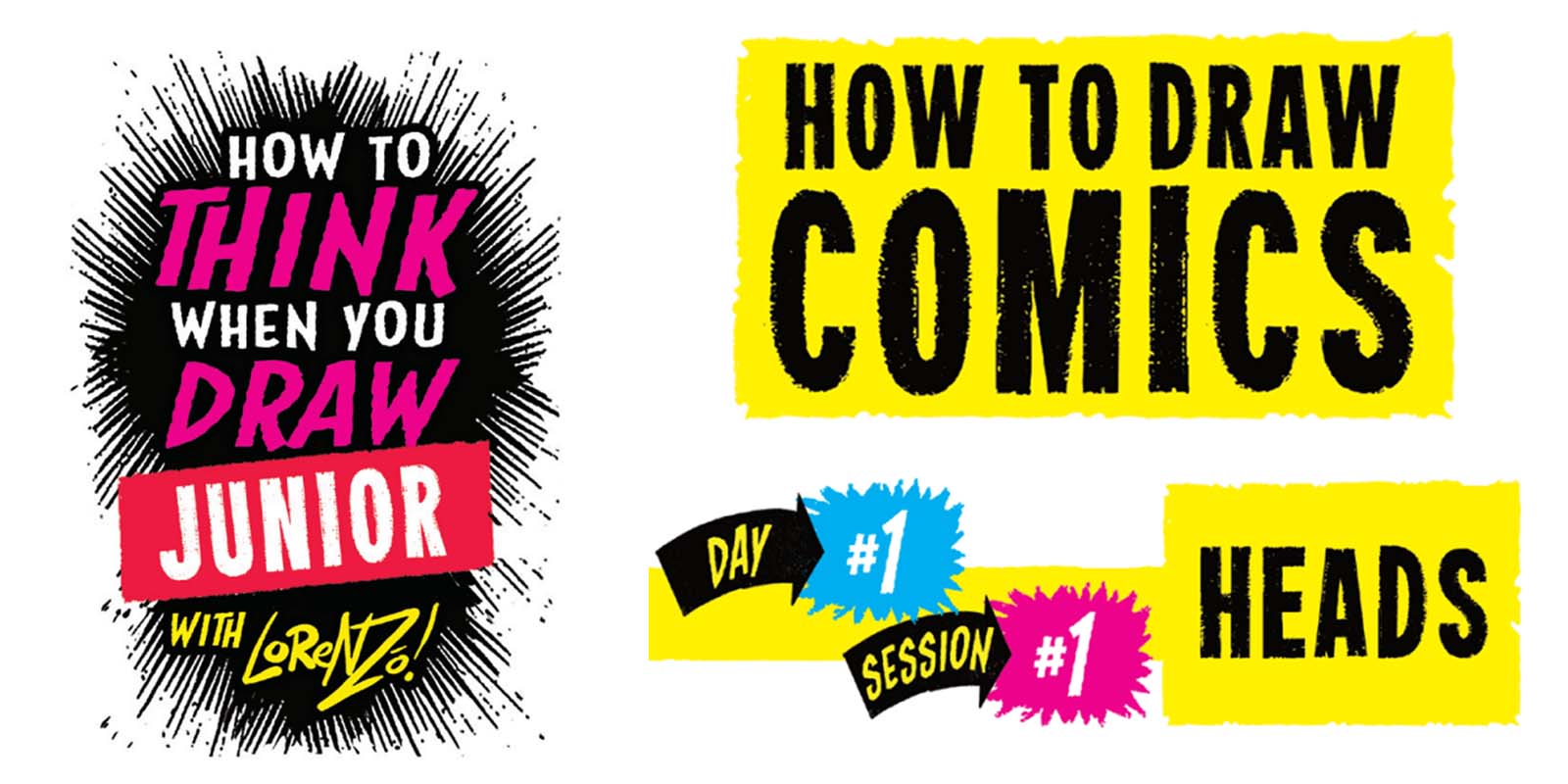
#1. How to draw heads
Here’s an easy approach to placing the features — eyes nose, ears, and mouth — on your character’s head.
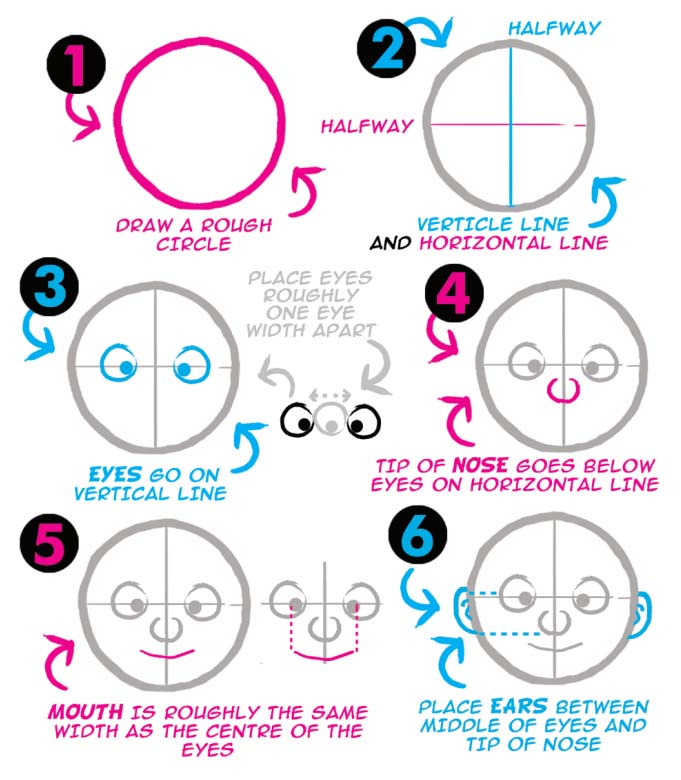
First, draw a rough circle. Then divide it in half twice — once with a vertical line and once with a horizontal line. The eyes go on the horizontal line, with each eye roughly one eye width apart. Then, the tip of the nose goes just below the eyes, on the vertical line. The mouth goes just below that, and it’s typically about the same width as the center of the eyes. Ears then go on either side, just about between the middle of the eyes and the tip of the nose.
And there’s your basic face! Of course, everyone’s face will look different, and you can exaggerate certain features, but this should serve as a rough guide.
Now, in comics, being able to draw your characters from lots of different angles is really useful. Remember, the head is a 3D shape! Here’s how to draw the head at different angles:
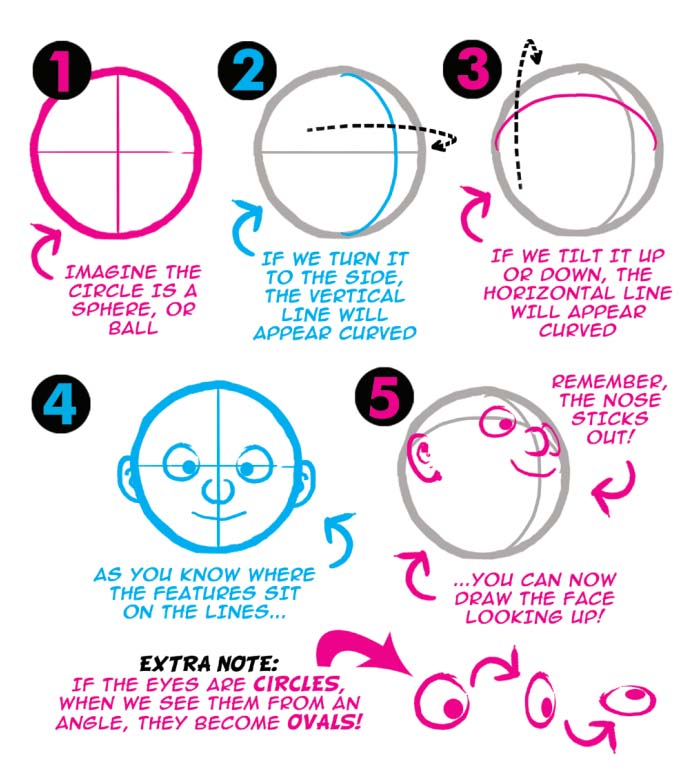
Imagine your character’s head as a sphere, like a ball, with that vertical and horizontal line drawn onto the surface of the ball. If we turn the ball to the side, the vertical line will appear curved. If we tilt it up and down, the horizontal line will appear curved. Since you know where the features sit on the lines, you can now draw the face looking up! Remember: the nose sticks out!
Extra tip: if the eyes are circles, then when we see them from an angle, they become ovals.
Ready for practice? Here’s a practice sheet. Feel free to download it, and then input it into your favorite drawing program. With your Wacom device, you can get started practicing digitally right away.
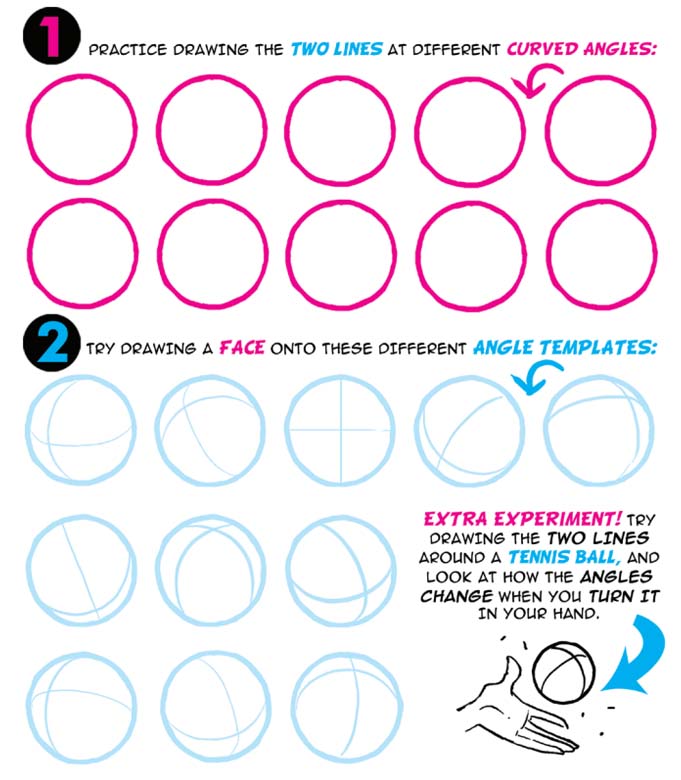
Remember, the entire PDF of How To Think When You Draw Junior is available here. You can also stay tuned to this blog, as we’ll be posting many more of these quick Comics tutorials.
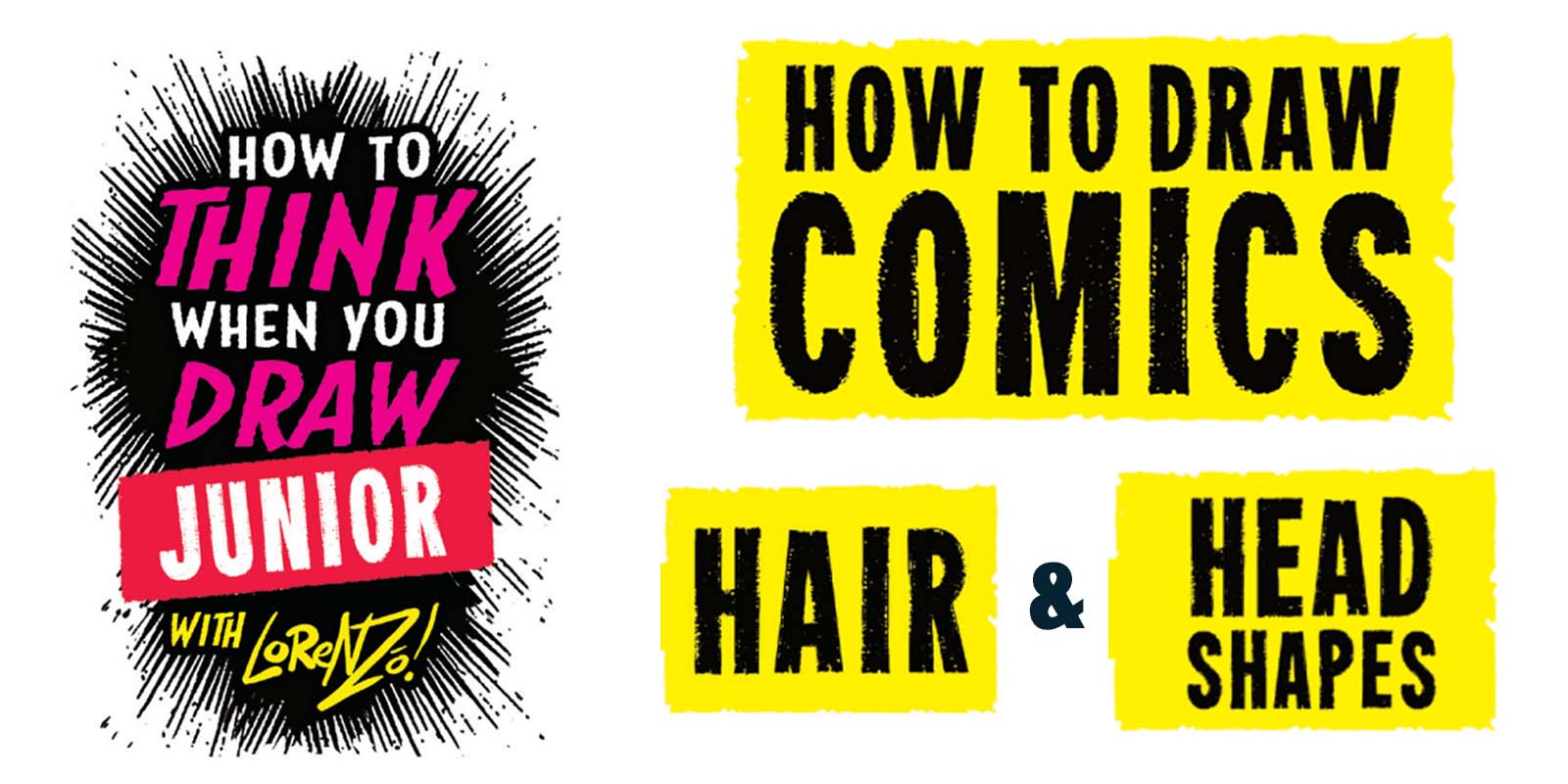
#2. How to draw hair and head shapes
It’s tempting to draw hair styles as lots of single hairs, because that’s what they’re made up of in real life! However, since comic hairstyles are vital for helping us recognize each individual character, try drawing the overall shape of the hair first.
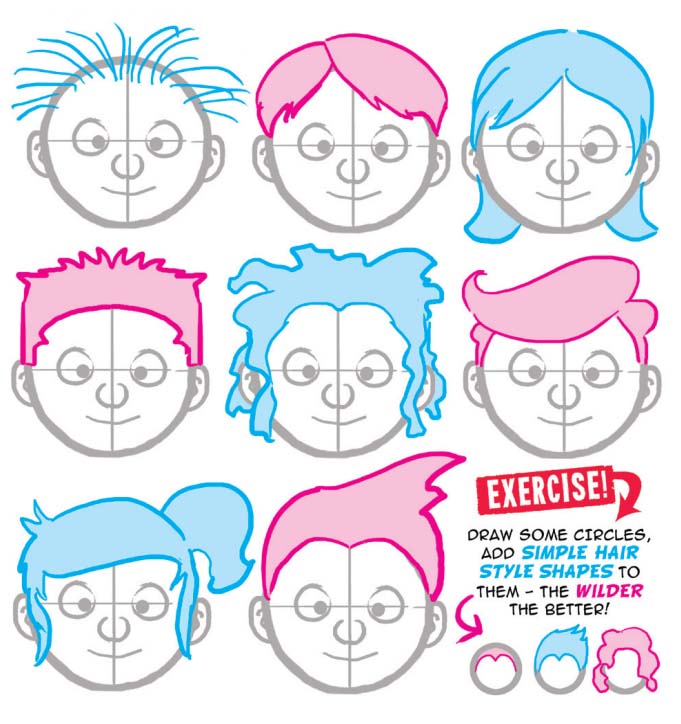
As an exercise, just draw a bunch of circles and add hair shapes to them — the wilder the better. You can see how dramatically it will affect the character’s look, even when their head is just a circle.
Now that you have some hair style shapes, add in a few interior lines, thinking about the direction the hair grows. Draw a shape, think about the hair direction, and add some individual hair lines.
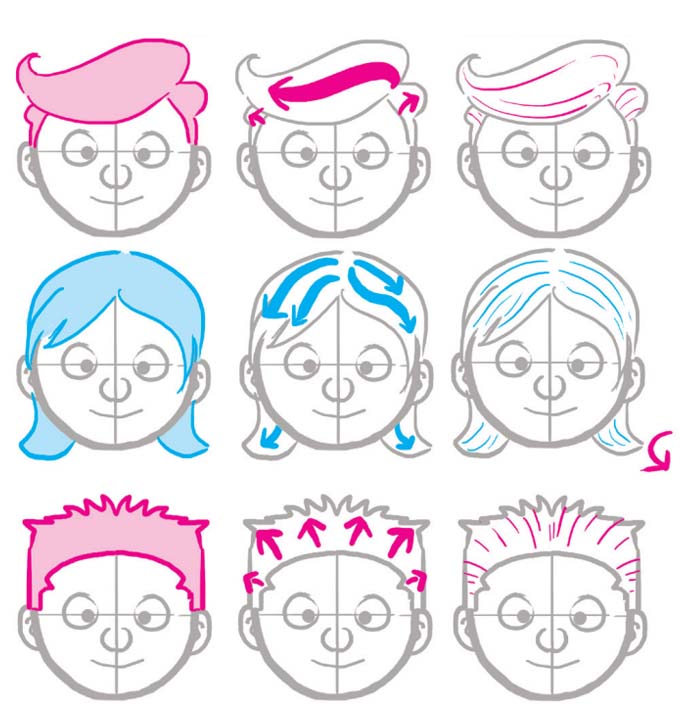
The character’s head shape will also help people recognize the character. Changing the shape of your character’s head, in particular their jaw, will totally alter their look.
You can also use the crossed lines you learned in the last tutorial to place your character’s features, just like you did with the round heads.

Ready for practice? Here’s an exercise sheet. Feel free to download it, and then input it into your favorite drawing program. With your Wacom device, you can get started practicing digitally right away.
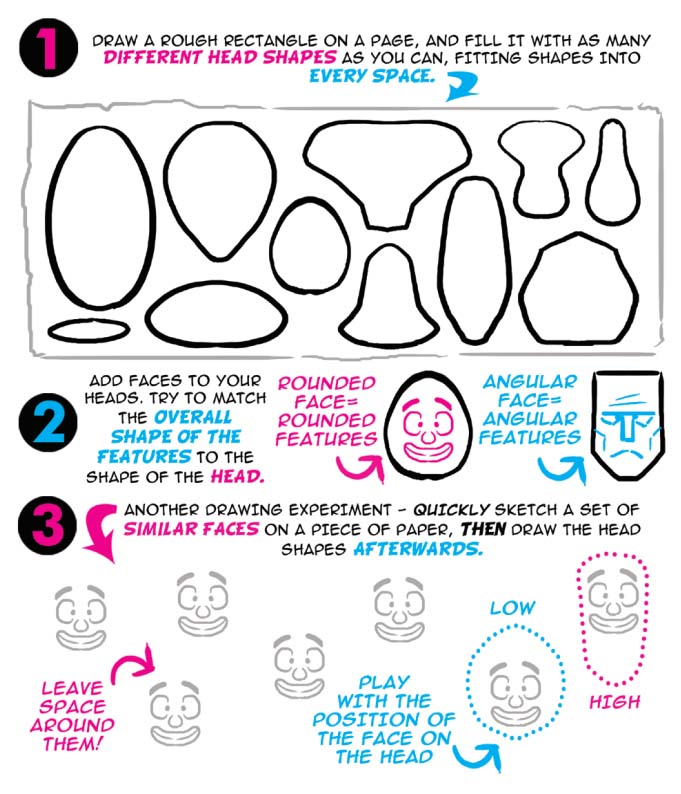
First, draw a rough rectangle on a page, and fill it with as many different head shapes as you can, fitting shapes into every space.
Then, add faces to these shapes. Try to match the overall shape of the features to the shape of the head: a rounded face can have rounded features, and an angular face can have angular features.
Finally, for another drawing experiment, quickly sketch a set of similar faces on a piece of paper. Then draw the head shapes afterward, leaving space around them and playing with the position of the face on the head.
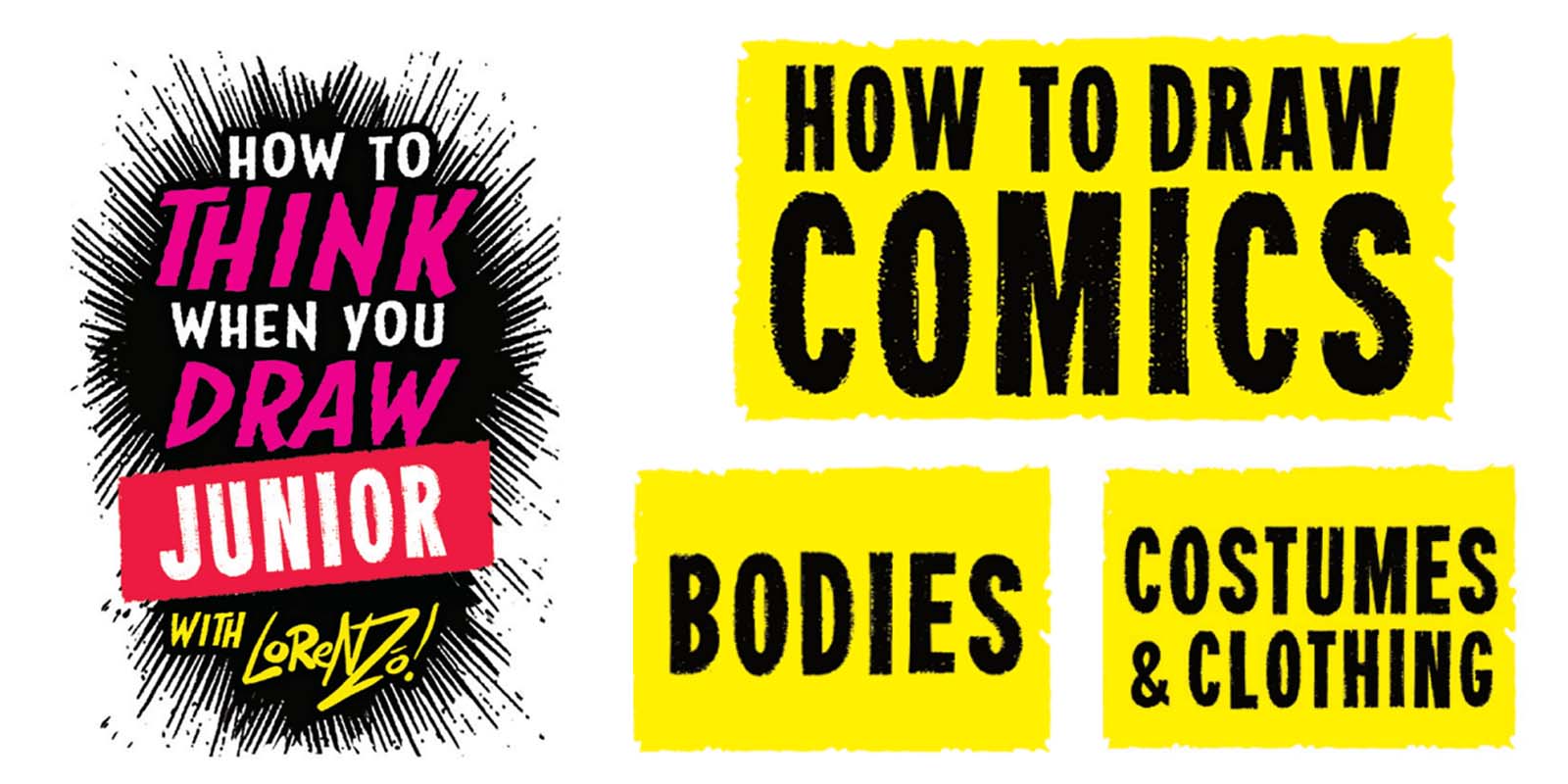
#3. Character design and costumes
Characters come in all shapes and sizes. A range of “character designs” is really important for making each one stand out in your comic. A great approach for designing a wide range of distinctive characters is to create a rectangle that will represent your character’s body, then divide each of them up into three sections. The following exercise can help you experiment with different character designs.

First, begin by randomly choosing the height of each section as either short, medium, or tall. Next, randomly make the width of each section narrow, medium, or wide. If you draw each of these sections as three-dimensional standing boxes, you can already see the range of body proportions.
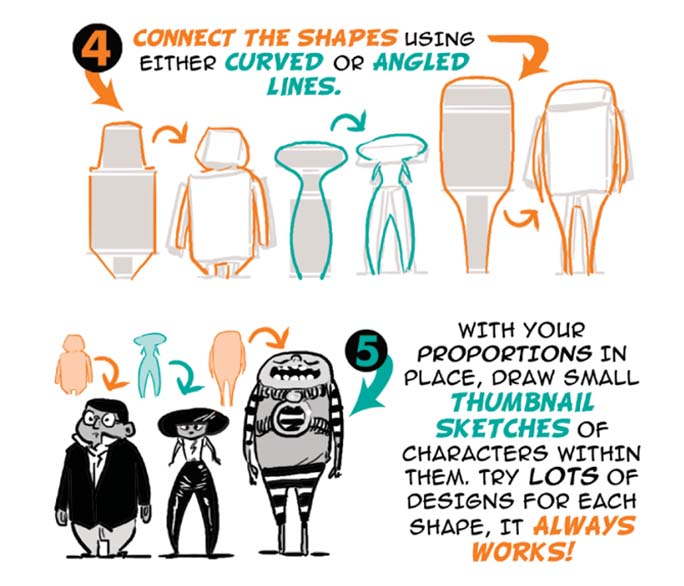
Then, connect the shapes using either curved or angled lines. With your proportions in place, draw small thumbnail sketches of characters within them. Try lots of designs for each shape. It alway sworks!
Also very important to character design: clothing and costumes. Your character’s clothes or costume are an important part of who they are, so spending a little time thinking about the details will help a lot! Keep these ideas in mind:
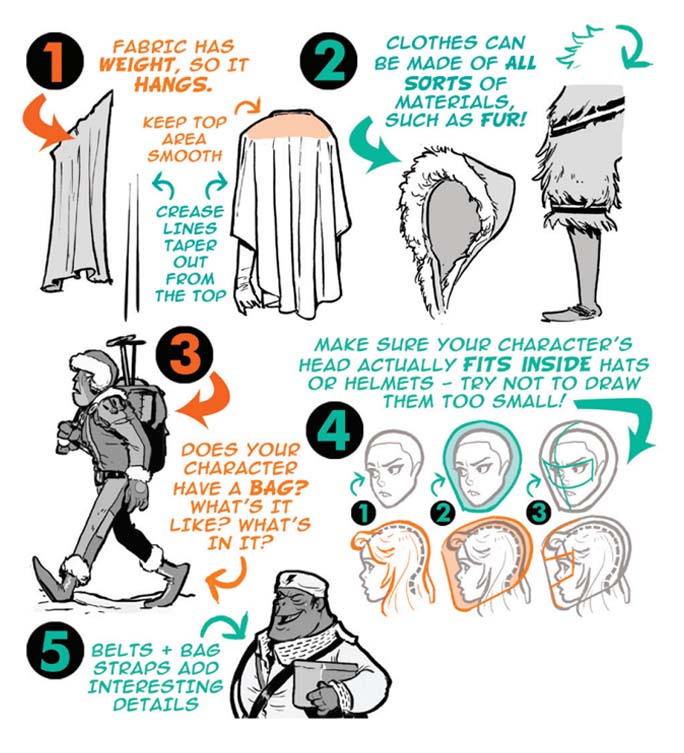
Remember that fabric has weight, so it hangs. Keep the top area smooth, and remember that crease lines taper out from the top. Clothes can be made of all sorts of materials, such as fur! Ask yourself: does your character have a bag? What’s it like? What’s in it? Make sure your character’s head actually fits inside hats or helmets — try not to draw them too small. Finally, belts and bag straps add interesting details.

Next, think of clothes in layers — they lay on top of each other. Also, clothes are made up of shapes — you can stack shapes on top of one another. Finally, remember that clothes don’t always fit perfectly, and clothes that aren’t a perfect fit can tell a story about your characters.
Remember, the entire PDF of How To Think When You Draw Junior is available here. You can also stay tuned to this blog, as we’ll be posting many more of these quick comics tutorials!
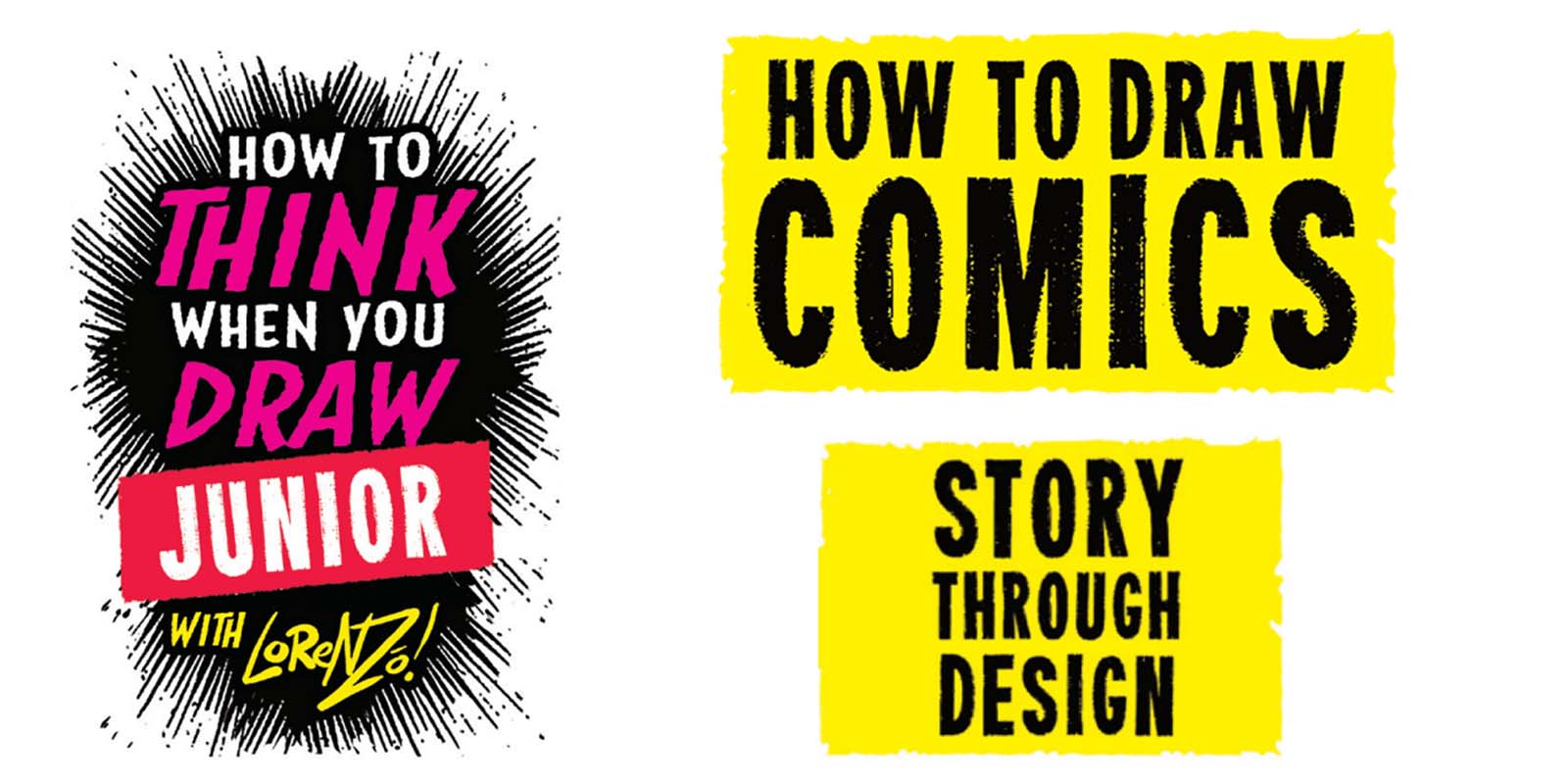
#4. Using character design to tell a layered story
Designing a character isn’t just about their look – their outfit also tells a story itself! We can use our character’s clothing or uniform to tell a layered story.
Choose a type of character – it can be a human, monster, or your favorite animal. For example, an ogre. Below, we have a pretty normal ogre. He’s very conventional, meaning he’s exactly what we’d expect an ogre to look like. His outfit is traditional fantasy clothing. He’s big, and strong, and he doesn’t look too clever. He doesn’t really seem like he has much of a story.
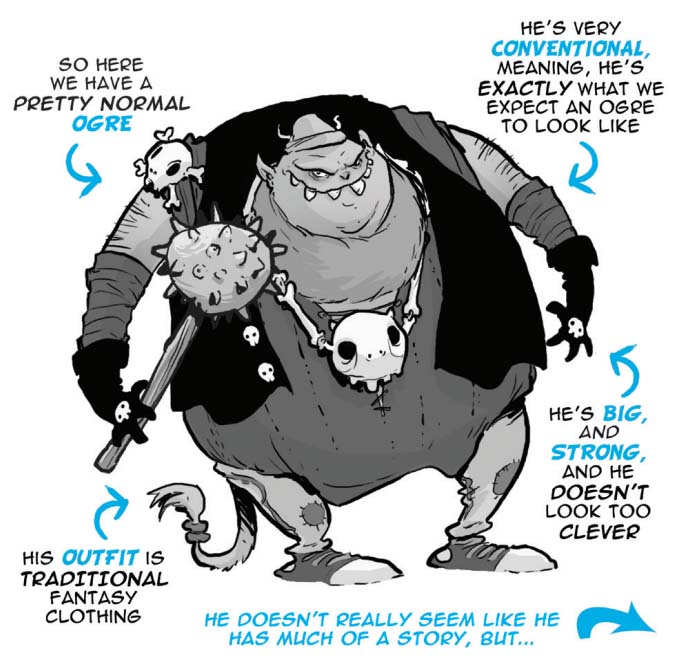
Now, write down a job for your character. It can be boring, or difficult, or tiring, but whatever the case, make it a job that your character doesn’t enjoy! Our ogre below works in a bank. I’ve changed his facial expression to show he finds the job stressful. His clothing doesn’t fit because his job doesn’t suit him. This is called a visual metaphor!
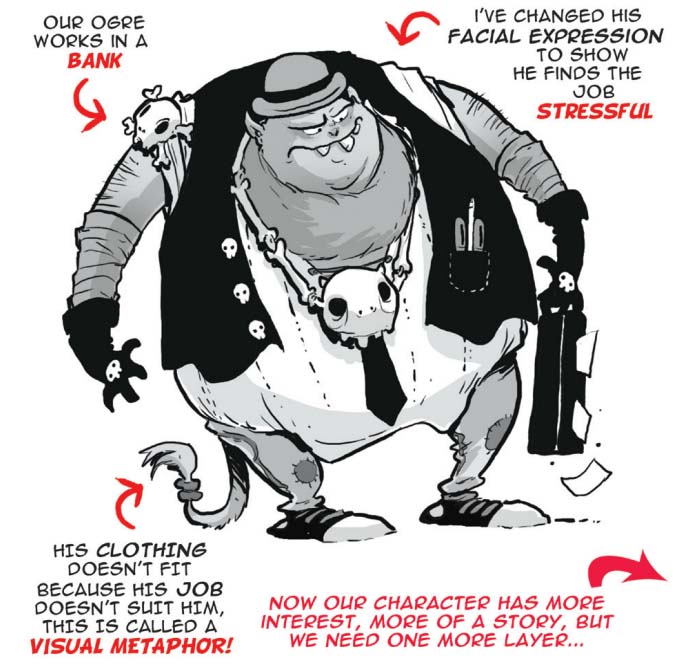
Now our character has more interest, more of a story, but we need one more layer…
Imagine a hobby or interest for your character, something they’d much rather be doing! But don’t make it obvious – try to think of something unlikely, something which has nothing to do with the type of character they are.
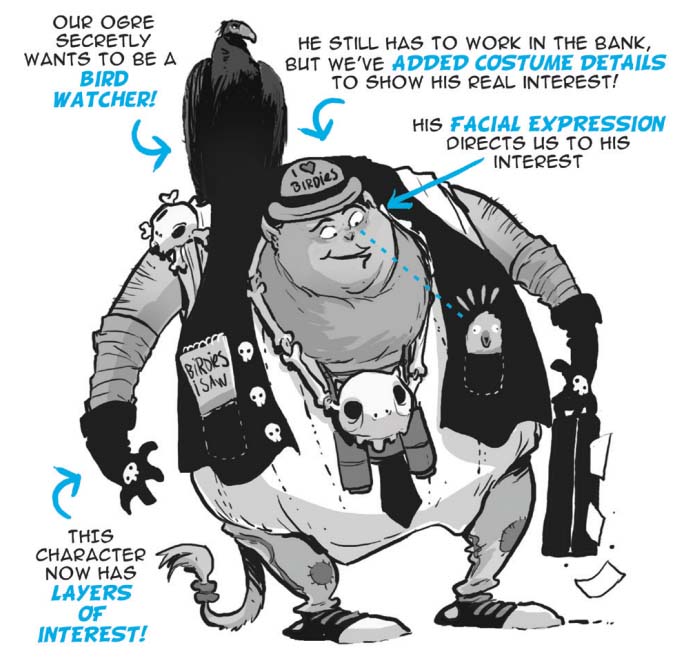
This ogre secretly wants to be a birdwatcher! He still has to work in the bank, but we’ve added costume details to show his real interest! His facial expression directs us to his interest. This character now has layers of interest!
Try out the technique with this exercise
The ogre we designed by mixing in a job and a hobby not only looks more interesting, but he makes it very easy for us to start telling a story. We could tell his story from any time point in the ogre’s life.
The past – how did the ogre end up working in a bank? The present – what is a day in the bank like, for the ogre? The future – how does he become a professional bird watcher?
Or, a story about what motivates him – why doesn’t the ogre like working in the bank? Why do birds love him?
- Choose a character type
- Give them a job they don’t like and that doesn’t fit their character type
- Give them a hobby that they wish was their job. This works best if the hobby has nothing to do with their character type!
- Draw them, remembering to put them in a uniform or outfit for their job, and add elements of the hobby
- Write down three different one-sentence story ideas you could tell about your character!
Remember, the entire PDF of How To Think When You Draw Junior is available here. You can also stay tuned to this blog, as we’ll be posting many more of these quick comics tutorials!

#5. Concept Art: Designing the rest of your comic’s world
Your best art comes from experimenting and playing with a variety of ideas, so it’s worth taking some time to develop the extra characters, items, and environments within your comic story, before you draw them on the final page.
The designs you create as you work out how you want these elements to look are called concept art, which really just means ideas art — drawing different ideas for how something could look until you find the one you like the best.
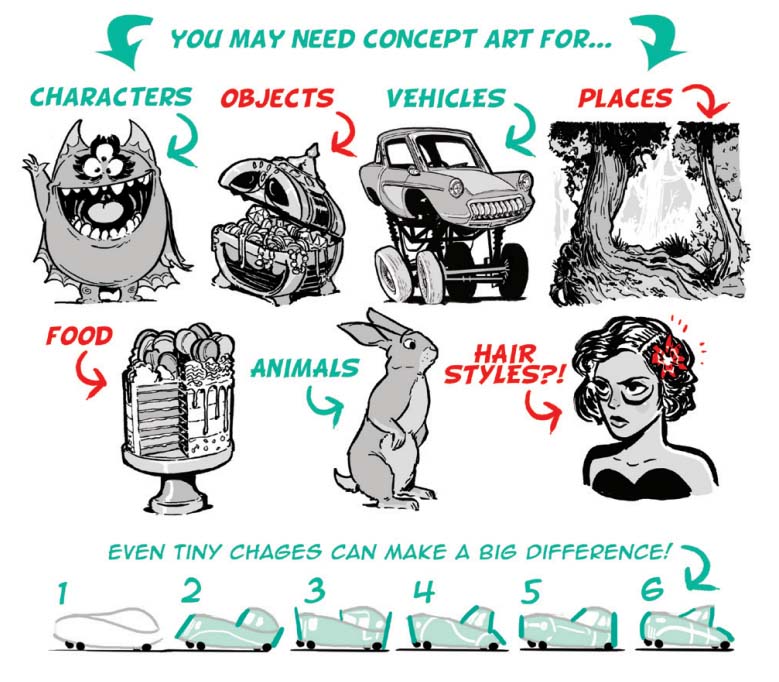
You may need concept art for characters, objects, vehicles, places, food, animals, or even hairstyles. Even tiny changes can make a big differences — changing the lines on a car, for example, can make it feel faster, slower, newer, older, etc.
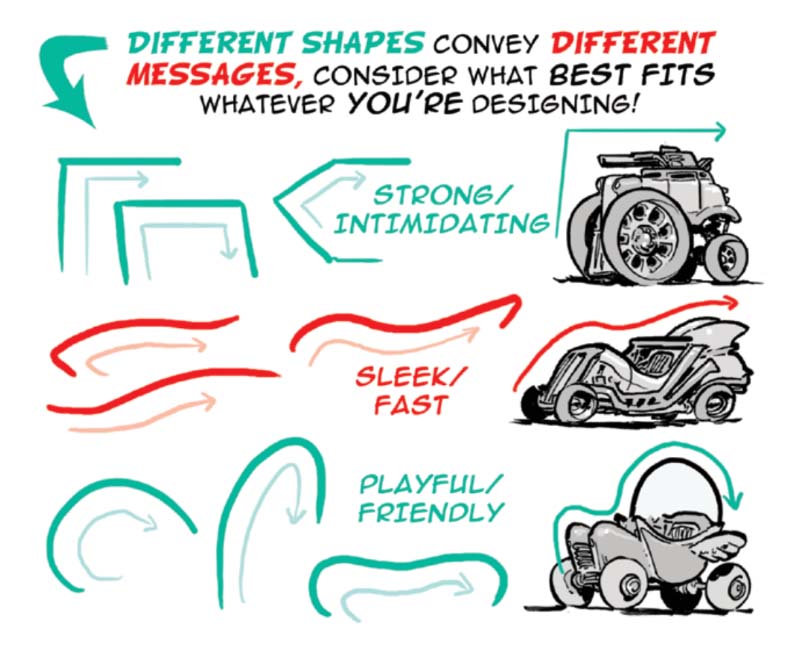
Different shapes convey different messages, considering what best fits whatever you’re designing! Sharp angles convey a strong and intimidating feeling. Long flowing lines convey sleekness and speed. And rounder, bouncier lines convey playfulness and friendliness.
You don’t have to draw completely different designs for each idea — sometimes changing just one thing will create a totally new character!
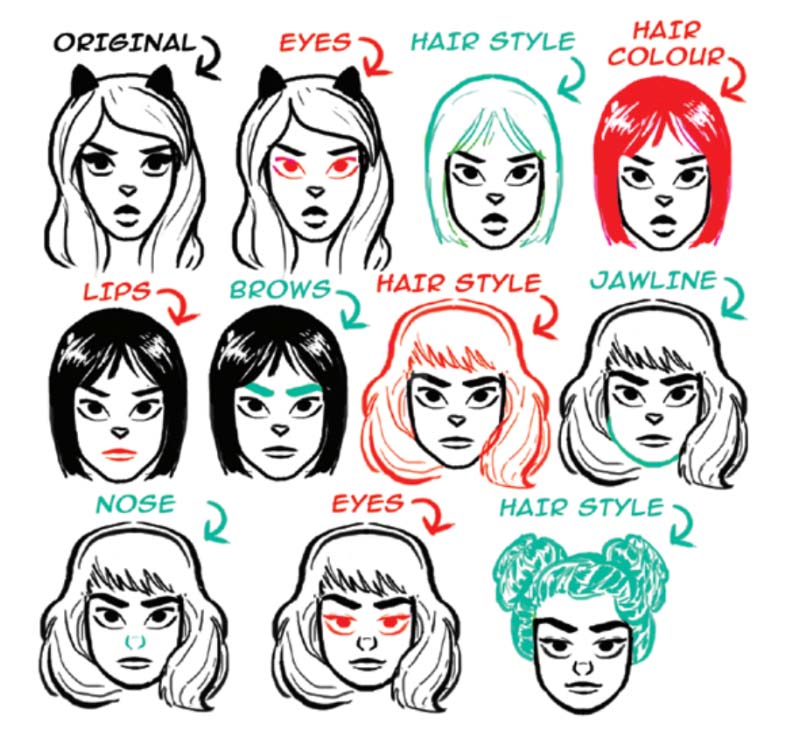
Compare the original character to the other versions, when the eyes, hair style, hair color, lips, brows, jawline, or nose have changed or been mixed and matched.
Remember, the entire PDF of How To Think When You Draw Junior is available here. You can also stay tuned to this blog, as we’ll be posting many more of these quick comics tutorials!
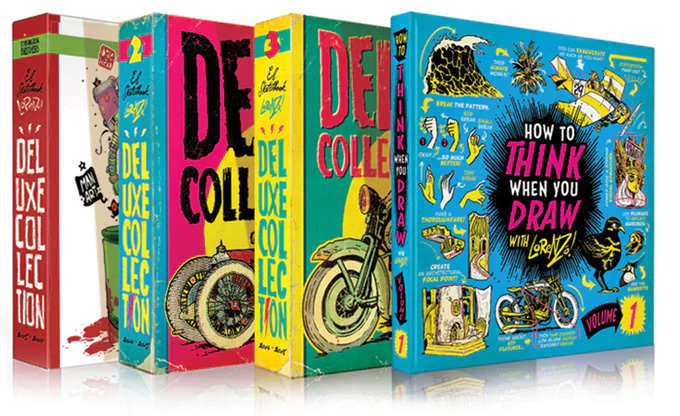
#6. More from the Etherington Brothers
Creators of THE WORLD’S MOST SUCCESSFUL ART BOOKS OF ALL TIME on Kickstarter. Book makers, tutorial sharers. Clients: Disney, Dreamworks, etc.
The Etherington Brothers’ books are available for a limited time only on Kickstarter. Follow the Etherington Brothers on social media to receive notifications about their upcoming book releases.
Connect / Follow the Etherington Brothers
Unleash your comic and character design potential with Wacom’s top displays and tablets
Elevate your creativity and precision with devices crafted specifically to bring your artistic vision to life. Explore our curated selection, tailored to meet the demands of crafting compelling comics and bringing characters to vivid existence.
Explore more comic content from Wacom
Elevate your storytelling and unleash your creativity with our expert advice and techniques. Dive in and discover how to bring your comics to life like never before!
Connect with Wacom on social media
Error: No connected account.
Please go to the Instagram Feed settings page to connect an account.
